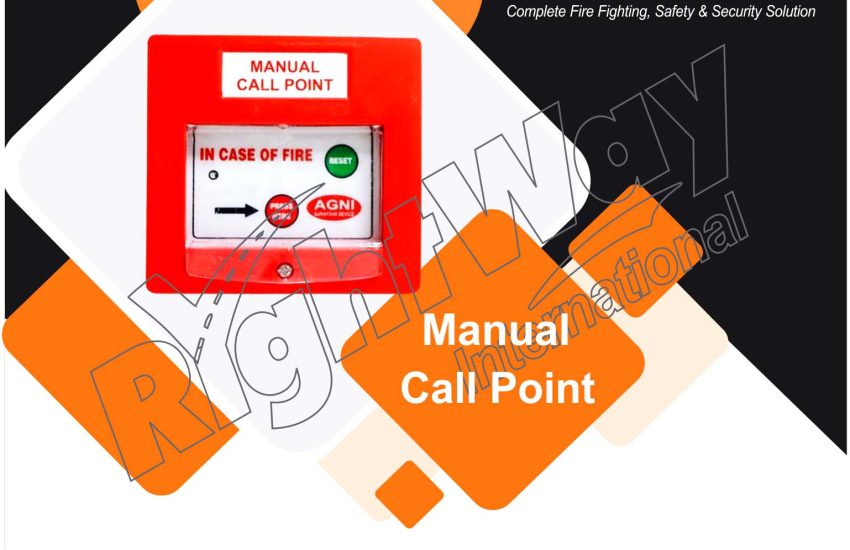Manual Call Point (MCPs)—also known as fire alarm pull stations—are essential components in fire alarm systems. They empower building occupants to manually trigger an alarm in the event of a fire, enabling fast, localized responses. This guide explains their function, benefits, types, installation, and maintenance.
What is a Manual Call Point?
A manual call point is a wall-mounted device that lets individuals activate a fire alarm system by either breaking glass or pressing a button. Designed for high visibility and accessibility, MCPs are strategically located throughout buildings to facilitate immediate alerts during fire emergencies.
How Manual Call Points Work
1. Activation Mechanisms
- Glass Breakage: Traditional call points use a glass panel. When broken, it completes an electrical circuit that sends a signal to the control panel.
- Push Button: Modern MCPs replace glass with a simple button. Pressing it instantly activates the alarm without breaking anything.
2. Signal Transmission
Once activated, the MCP sends a signal to the fire alarm control panel, which then triggers the system’s alerts—such as sirens, strobe lights, or emergency notifications to response teams.
Benefits of Manual Call Points
1. Rapid Emergency Response
Manual call points offer a direct and immediate method for raising the alarm. When seconds matter, quick activation helps ensure faster evacuations and emergency responses.
2. Increased Occupant Safety
Because MCPs allow anyone to trigger the system, they serve as a vital backup in case automated detectors fail to sense a fire.
3. Accessibility and Visibility
MCPs are typically installed in well-marked, easily accessible areas—often near exits and corridors—ensuring occupants can find and activate them quickly during emergencies.
Types of Manual Call Points
1. Break Glass Call Points
These traditional models use a glass panel that must be broken to trigger the alarm. Simple and reliable, they’ve been standard in fire safety systems for decades.
2. Push Button Call Points
These newer designs are user-friendly and avoid glass shards. Pressing the button instantly activates the alarm without requiring force.
3. Dual-Action Call Points
To reduce false alarms, these devices require two actions—such as lifting a cover or using a key—before the activation button can be pressed.
4. Addressable Call Points
Used in advanced fire systems, these MCPs have unique identifiers, allowing responders to pinpoint the exact location of the triggered unit.
Installation Guidelines for Manual Call Points
1. Strategic Placement
- Accessibility: Install MCPs in high-traffic areas and near exits for quick access during evacuation.
- Visibility: Make sure they are clearly marked with signage and free from obstructions.
2. Proper Mounting
- Height: Standard mounting height ranges from 1.2 to 1.4 meters (4 to 4.5 feet) from the floor to accommodate all users, including those with disabilities.
- Environment: Avoid installing near sources of heat, steam, or dust that might affect functionality or visibility.
3. System Integration
Ensure MCPs are properly wired and programmed into the overall fire alarm system so that activation results in both local and system-wide alerts.
Maintenance Best Practices
1. Regular Testing
Follow local fire codes and manufacturer guidelines to test each MCP on a scheduled basis, ensuring immediate and accurate alarm triggering.
2. Routine Inspections
Inspect MCPs for:
- Physical damage
- Obstructions
- Tampering or vandalism
- Wear on covers or activation mechanisms
3. Timely Replacements
Immediately replace or repair any faulty units. Always use manufacturer-approved components to maintain system compatibility and compliance.
4. Staff Training
Provide clear, practical training on when and how to activate an MCP. This ensures occupants can confidently respond in an emergency.
Conclusion
Manual call points are a critical safety feature in any fire protection system. By allowing building occupants to manually trigger alarms, they significantly enhance emergency preparedness and life safety. With proper placement, routine maintenance, and regular training, MCPs remain a reliable and effective tool in fire emergency response.


